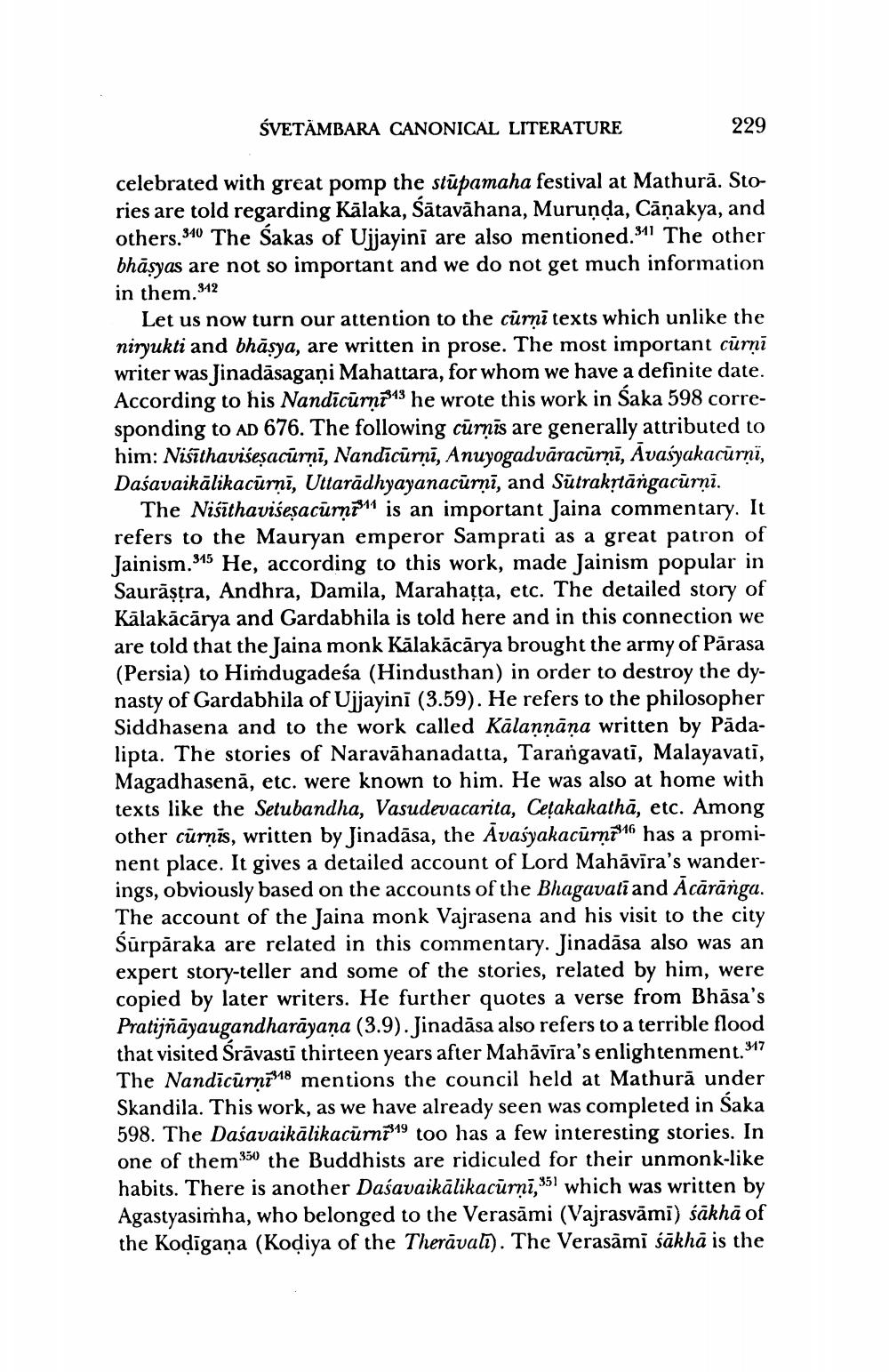________________
ŚVETÄMBARA CANONICAL LITERATURE
229
celebrated with great pomp the stūpamaha festival at Mathurā. Stories are told regarding Kälaka, śātavāhana, Muruņņa, Cāņakya, and others. 540 The Sakas of Ujjayini are also mentioned. 941 The other bhāşyas are not so important and we do not get much information in them.312
Let us now turn our attention to the curni texts which unlike the niryukti and bhāsya, are written in prose. The most important cūrni writer was Jinadāsagani Mahattara, for whom we have a definite date. According to his Nandicūrņ7343 he wrote this work in Saka 598 corresponding to AD 676. The following cūrņīs are generally attributed to him: Nisīthavišeşacūrņi, Nandīcārņā, Anuyogadvāracūrņā, Āvasyakacūrņi, Daśavaikālikacūrni, Uttaradhyayanacūrņi, and Sūtrakstāngacūrni.
The Niśithavišeşacūrņ711 is an important Jaina commentary. It refers to the Mauryan emperor Samprati as a great patron of Jainism.315 He, according to this work, made Jainism popular in Saurāșțra, Andhra, Damila, Marahațţa, etc. The detailed story of Kālakācārya and Gardabhila is told here and in this connection we are told that the Jaina monk Kälakācārya brought the army of Pärasa (Persia) to Himdugadeśa (Hindusthan) in order to destroy the dynasty of Gardabhila of Ujjayini (3.59). He refers to the philosopher Siddhasena and to the work called Kālaņņāņa written by Pädalipta. The stories of Naravāhanadatta, Tarangavati, Malayavati, Magadhasenā, etc. were known to him. He was also at home with texts like the Setubandha, Vasudevacarita, Cețakakathā, etc. Among other cūrņās, written by Jinadāsa, the Avasyakacūrņ#16 has a prominent place. It gives a detailed account of Lord Mahāvīra's wanderings, obviously based on the accounts of the Bhagavati and Acārānga. The account of the Jaina monk Vajrasena and his visit to the city Sürpāraka are related in this commentary. Jinadāsa also was an expert story-teller and some of the stories, related by him, were copied by later writers. He further quotes a verse from Bhāsa's Pratijñāyaugandharāyaṇa (3.9). Jinadāsa also refers to a terrible flood that visited Śrāvasti thirteen years after Mahāvīra's enlightenment. 917 The Nandicūrni'18 mentions the council held at Mathură under Skandila. This work, as we have already seen was completed in Saka 598. The Daśavaikālikacūrn719 too has a few interesting stories. In one of them 350 the Buddhists are ridiculed for their unmonk-like habits. There is another Daśavaikälikacūrnī,951 which was written by Agastyasimha, who belonged to the Verasāmi (Vajrasvāmi) śākhā of the Kodigana (Kodiya of the Theraval). The Verasāmi šākhā is the




